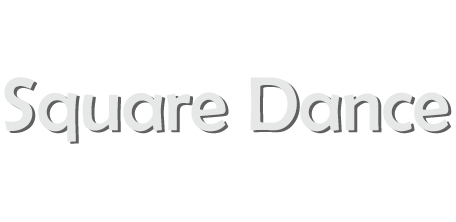
All of us are aware about the fact that dancing is an exercise and fun at the same time. However, very few dances have a research evidence for it. There is one such dance that stands the criteria. It is the American Square Dance. According to a recent study, researchers attached pedometers to the square dancers and found that each person covered over four miles in a single evening; the result of which may be burning calories, strengthening of bones and achieving cardiovascular conditioning. Also called as Modern Square Dancing in the English language, it is estimated that about six million dancers perform Square Dance regularly in the clubs of US alone. An ‘official national folk dance’ of America, Square Dance has been an integral part of American social life for centuries. Every year, 29th of November is regarded as the Square Dance Day in the United States. As the name suggests, Square Dance is a dance of four couples, one couple on each side facing the middle of the square. Let us discuss the dance in detail.
Despite of it being so popular, there is no well–documented history of the Square Dance. There have been scores of books that explain specific figures and calls but no current source that may offer a detailed discussion of its development as a form. Square Dancing can be traced back to the activity of several European ancestors. It was in England when around 1600 dancers performed the Morris Dance which inspired the English country dance. This dance was lined up on village greens to practice weaving, circling and swinging moves similar to the modern–day square dancing. Hence, it can be said that Square dances were first documented in England in the 17th century and then came to North America along with the European settlers. Due to its association in the 20th century with the romanticized image of the American cowboy, the Western American Square Dance may be the most widely known form, excluding the dances from India and China, and is hence associated with the United States of America. Almost about 19 US states have designated it as their official state dance.
Various movements of the Square Dance are based on the steps and figures that are used in traditional folk dances and social dances from many countries which include the Morris dance, English Country dance and the Quadrille. Most of the American forms of Square Dance are characterized by a sequence of steps by a caller to the beat of the music. This caller can be one of the dancers or musicians. The dance begins with the introductory circle to the left where the first couple moves to the second couple and executes a special figure, then the next couple and is hence repeated, thus forming a square. This continues until every couple follows a sort of continuous looping and furious dancing. Since all the movement is in the feet and the ankles, the step is light, body erect and every limb is loose and relaxed.
Traditional Square dance is performed on live music. Much of the repertoire of Square dance is derived from the jigs and reels of Scotland and Ireland since the 19th century, which is played on acoustic instruments such as fiddle, banjo, guitar and double bass. However, in specific regions, certain instruments such as piano, accordion, concertina and hammered dulcimer are popular. In the 1930s, 40s and 50s, instruments such as saxophones, drums and electric guitars are used. Depending upon the regional style, tempos can vary from around 108 to more than 150 bpm.
Although, very little attention was given to any special clothes to perform for the Square Dance, girls adorn themselves with full–skirted dresses and pantaloons whereas boys wear western cut pants and cowboy boots which sell its image to the public. These costumes became a matter of pride for the square dancers and a ‘badge’ for the new dancers.
Considering the standard formation of the dance, there are many variations on the theme. These include:
- Winter Solstice: This is a square with one couple at the centre.
- Ninepins: It is a square of couples with one extra person in the middle.
- Twelve Reel: Here, the couples are divided with three on each side. There is a man with a lady on the either side of him.
- Hexitation: Two couples head the positions in the square.
- Grid Squares: The squares are arranged in a grid and the dancers move according to the calls from one square to another in intricate patterns.
G Kowledge of | 0 Comments >>
0 Comments
Leave Comment
Your email address will not be published. Required fields are marked.